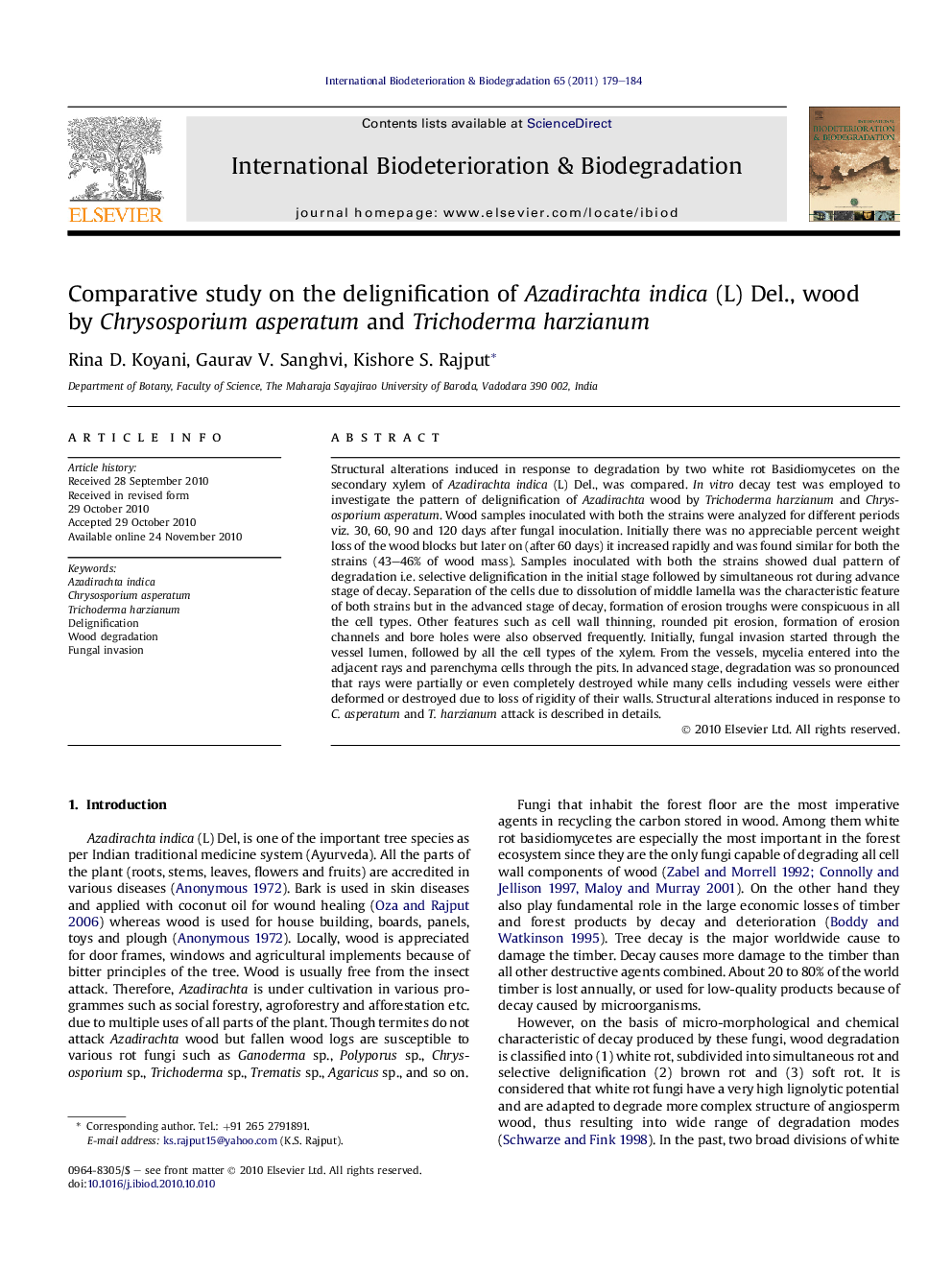| Article ID | Journal | Published Year | Pages | File Type |
|---|---|---|---|---|
| 6289603 | International Biodeterioration & Biodegradation | 2011 | 6 Pages |
Structural alterations induced in response to degradation by two white rot Basidiomycetes on the secondary xylem of Azadirachta indica (L) Del., was compared. In vitro decay test was employed to investigate the pattern of delignification of Azadirachta wood by Trichoderma harzianum and Chrysosporium asperatum. Wood samples inoculated with both the strains were analyzed for different periods viz. 30, 60, 90 and 120 days after fungal inoculation. Initially there was no appreciable percent weight loss of the wood blocks but later on (after 60 days) it increased rapidly and was found similar for both the strains (43-46% of wood mass). Samples inoculated with both the strains showed dual pattern of degradation i.e. selective delignification in the initial stage followed by simultaneous rot during advance stage of decay. Separation of the cells due to dissolution of middle lamella was the characteristic feature of both strains but in the advanced stage of decay, formation of erosion troughs were conspicuous in all the cell types. Other features such as cell wall thinning, rounded pit erosion, formation of erosion channels and bore holes were also observed frequently. Initially, fungal invasion started through the vessel lumen, followed by all the cell types of the xylem. From the vessels, mycelia entered into the adjacent rays and parenchyma cells through the pits. In advanced stage, degradation was so pronounced that rays were partially or even completely destroyed while many cells including vessels were either deformed or destroyed due to loss of rigidity of their walls. Structural alterations induced in response to C. asperatum and T. harzianum attack is described in details.
